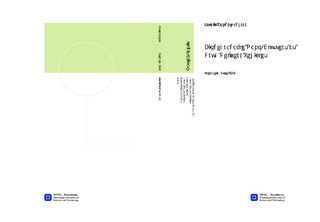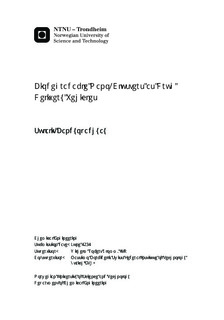| dc.contributor.advisor | Glomm, Wilhelm Robert | nb_NO |
| dc.contributor.advisor | Morbidelli, Massimo | nb_NO |
| dc.contributor.author | Bandyopadhyay, Sulalit | nb_NO |
| dc.date.accessioned | 2014-12-19T13:24:13Z | |
| dc.date.available | 2014-12-19T13:24:13Z | |
| dc.date.created | 2013-09-25 | nb_NO |
| dc.date.issued | 2012 | nb_NO |
| dc.identifier | 651436 | nb_NO |
| dc.identifier | ntnudaim:7045 | nb_NO |
| dc.identifier.uri | http://hdl.handle.net/11250/248528 | |
| dc.description.abstract | The master thesis has investigated primarily on the synthesis of different polymeric NPs viz PLA (synthesized in house as well as commercial grade), PLGA (commercial) and PCL(synthesized in house, having different functionalities ?COOH, -PEG and their blends) employing flash nano-precipitation technique in a multi inlet vortex mixer (MIVM), previously optimized in the Morbidelli group at ETH. These NPs were characterized using DLS (Dynamic Light Scattering) and Zeta-Sizer to report the variation of the sizes and zeta potentials respectively of the NPs as a function of polymer molecular weight and initial concentration of polymer. The lowest possible sizes of the NPs were then selected for further studies as the overall motivation of the work is to synthesize NCs composed of primary particles and thereafter compare and contrast drug loading, encapsulation efficiencies and release kinetics of a model drug between the two. Ibuprofen (model drug) was loaded into the primary NPs using the MIVM setup, following which drug loading and encapsulation efficiencies were measured using High Performance Liquid Chromatography (HPLC). The release kinetics experiments were performed at 37°C and also studied at room temperature (25°C) and 45°C to evaluate the effect of temperature on release mechanism. The drug-loaded NPs were separated from the free drug in solution at different times using centrifugal filtration. The amount of drug released over time was measured by analyzing these supernatants using HPLC. The MIVM setup is found to produce stable polymeric NPs as small as 50nm and as large as 155nm depending on polymer concentration and nature of polymer. The results indicate that this setup is capable of producing drug loaded NPs with high drug loading efficiencies varying between 75% and 88% differing with polymers. This particular aspect has been established to be both reproducible and valid for a wide range of polymers through subsequent experiments. On the contrary, the release kinetics from almost all the different types of polymeric systems is slow; lasting over several days and moreover, it is not possible to release the entire loaded drug. It is claimed that either the chemical interaction of the polymers with ibuprofen or the location of the drug inside the polymeric NPs is the potential reason for extremely slow release kinetics. It is therefore suggested that further investigation is needed for the same system with another drug, having similar solubility parameters as ibuprofen to confirm the observed behaviour or even a completely different synthesis method for drug loaded polymeric NPs using ibuprofen to substantiate the observed results. | nb_NO |
| dc.language | eng | nb_NO |
| dc.publisher | Institutt for kjemisk prosessteknologi | nb_NO |
| dc.title | Biodegradable Nano-Clusters as Drug Delivery Vehicles | nb_NO |
| dc.type | Master thesis | nb_NO |
| dc.source.pagenumber | 40 | nb_NO |
| dc.contributor.department | Norges teknisk-naturvitenskapelige universitet, Fakultet for naturvitenskap og teknologi, Institutt for kjemisk prosessteknologi | nb_NO |

